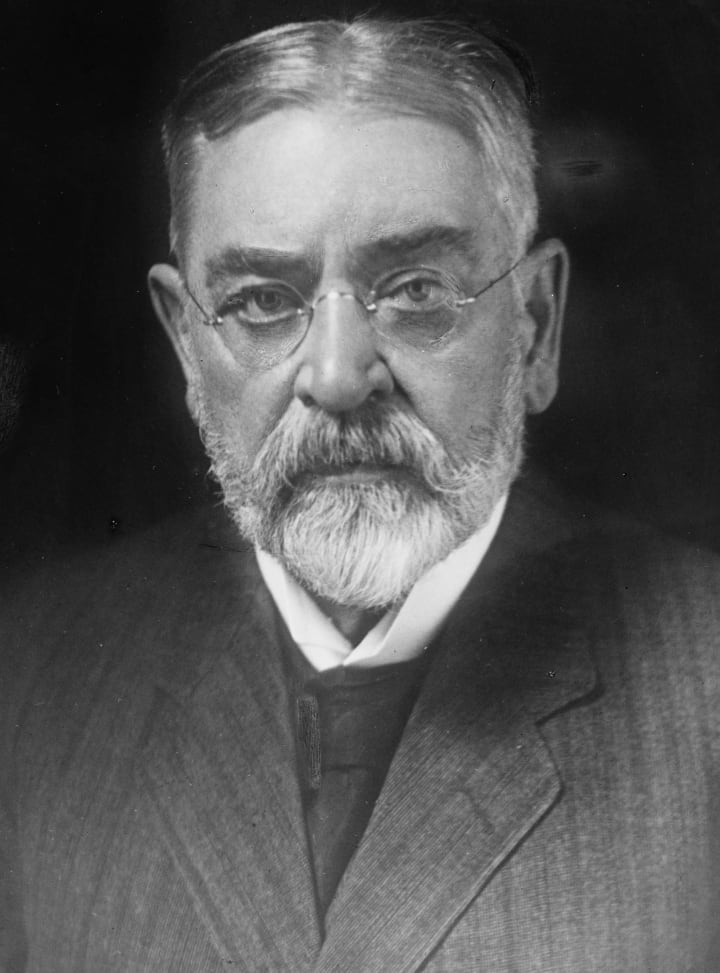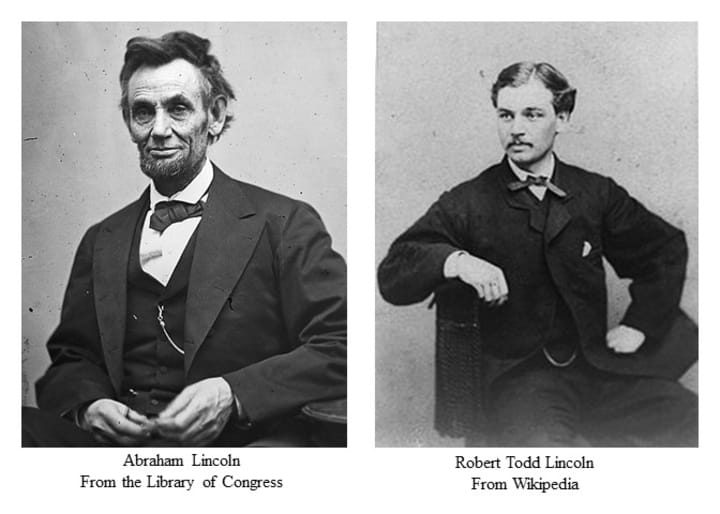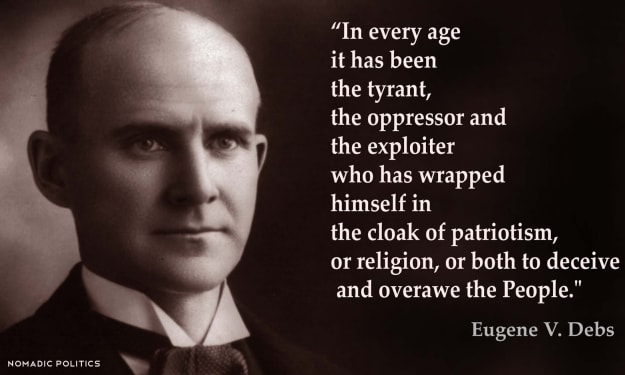Threnody in Steam
Abe Lincoln's last journey with his son, Robert Todd Lincoln at his side.

Most people are unaware that Abraham Lincoln’s body was couriered by train over 1,654 miles, through 400 cities and 7 states. At each stop in the line, his body was put on display for people to come and pay their respects. On-hand through this ordeal was his son, Robert Todd Lincoln, often referred to as the “Prince of Rails”, even though he wasn’t fond of the adage.
The Funeral Circuit
Mary Todd Lincoln wanted to have the bodies of her husband and her son Willie sent directly to Springfield, Illinois to be buried. Edwin Stanton, Secretary of War, convinced her to send the president’s body by rail to each of the whistle stops from his campaign four years before when he travelled from Illinois to the nation’s capital.

Mary conceded but opted not to take the train to Springfield. In her emotional state she was incapable of handling much and this trip would be overwhelming... which was unfortunate, really. The new Springfield cars were literally like a palace on rails. After his contribution to the railroad, it was truly a shame that Abraham Lincoln couldn’t have enjoyed this momentous ride from the elongated velvet divan made just for him, rather than lying in a box.

Lincoln's funeral car was originally commissioned by the War Department as a private car for the use of the president and his cabinet. Completed in early 1865, it had been over a year in the making. It was one of the most lavishly appointed railroad cars ever built, sporting upholstered walls, wood paneling, decorative painted panels, and etched-glass windows. Its wheels were wider than most, intended to ensure it's safe travel over any gauge railroad, and its sides were ironclad, with armor-plating between the outer and inner walls. The car was 42.5 feet long, 8.5 feet wide and had a newly developed heating system. It contained a stateroom, sitting room, and a sleeping apartment. The coach cost $10,000, more than three times the cost of other passenger cars.
Lincoln never used it.

April 21, 1865, Lincoln’s black mahogany coffin was moved by horse-drawn hearse from the U.S. Capitol, (where he'd been for a couple of days), to the nearby Baltimore & Ohio Railroad station. Soldiers carried the coffin by brightly polished, silver handles onto the presidential railroad car, which featured the absolute finest appointments of the day.
Inside the funeral car, the president joined his son, Willie, who had died from typhoid fever three years earlier at the age of 11. Willie’s casket had been held in a vault in a Georgetown cemetery awaiting interment in Springfield at the end of Lincoln’s presidency, which no one envisioned would end so prematurely.

There were 150 passengers on Lincoln's funeral train, including family and civilian officials. The last car on the train, called "The Brass Car", housed military persons who travelled with them. A passenger on that car and presidential aide, Edward Duffield Neil, later wrote of Robert: “his manly bearing on that trying occasion made me feel that he was a worthy son of a worthy father.”

Also among the passengers was a funeral director and an embalmer to help keep the president’s body presentable for viewing. There had been great advancements in embalming during the Civil War, which allowed bodies of soldiers to be returned to their families for burial, and the same process was used to preserve Abraham Lincoln. Embalmer Charles Brown told the Chicago Tribune in an interview that, “The body of the president will never know decay”.
However, over the passage of time, keeping the president suitable for viewing became a challenge. Even with the best skills and makeup available, his skin had become chalky and the smell of decay grew more and more difficult to hide. The train was only to move at a top speed of 30-miles-per-hour so as to give onlookers the opportunity to pay their respects. The journey would be long and arduous and the embalmer had his work cut out for him.
The train first stopped on a rainy day in Baltimore, a city once so hostile to Lincoln that as president-elect, he had to go through it incognito. It was the hometown of John Wilkes Booth so, animosity for Lincoln might have been understood. None of that remained as four hooded black horses carried the hearse through muddy streets for nearly three hours before the actual viewing. Among the mourners were approximately 30,000 members of the black community.
Charles Page, a New York Tribune reporter, said he was struck by the sight of “white and black side by side in the rain and the mud” and the lack of “consciousness of any difference of color.”
At Independence Hall in Philadelphia, tens of thousands viewed the presidential coffin where, four years before, Lincoln declared he “would rather be assassinated on this spot than to surrender” the principles of the Declaration of Independence. Nearly 150,000 people paid their respect near the foot of the Liberty Bell that day. Robert Todd Lincoln was present to shake hands with and console mourners, all the while riding the train in the presidential car with the caskets of his father and little brother.
Greeted by even larger crowds in Manhattan, almost half-million spectators crowded in the streets to see President Lincoln. Even a six-year-old Theodore Roosevelt looked down from a second-floor window to view the massive procession, where 16 horses led a patriotically detailed hearse. Almost 125,000 people filed past Lincoln’s body once it was displayed in City Hall.
In Chicago, mourners erected a forty-foot set of Gothic Arches in his memory. As the journey continued, it almost seemed each city strove to outdo the last in its welcome.

More moving than the pomp and circumstance were the moments of sorrow in people who traveled to camp along the railroad tracks, seeking a momentary glimpse of the presidential coffin through the railcar windows.
Imagine what Robert Lincoln felt with each passing mile as men stood with heads bowed, hat in hand, and whole choirs stood at the rail-side, singing hymns. Bonfires and lantern light illuminated the way for the people who stood in the dark and the rain as the carriage passed by. The grief of the Civil War passed by in the night and disappeared along with the great president who rode by with his sons.
After a public viewing in Chicago where the line of mourners stretched more than a mile, the train pulled into Springfield, Illinois at 9 am on May 3rd, 1865. The steam whistle blew a final threnody that reached into the very heart of every person for miles.
By 10:00am, the hearse, crowned in regal black feathers and pulled by six black horses had collected Lincoln and began conducting him to the State House. Robert rode in the lesser of the two carriages, accompanying his little brother. The procession moved from the depot where thousands of people looked on. The viewing lasted until the following morning at 10am, when the procession would move to Oak Ridge Cemetery.

Lincoln’s coffin finally closed on the morning of May 4th. Following the burial ceremony and eulogy at Oak Ridge Cemetery, the coffins of father and son were placed inside a limestone vault. Three weeks after he breathed his last, Lincoln was finally laid to rest.

Robert Todd Lincoln

George Pullman was the father of the modern passenger railroad. Not attached to the railroad in any way, his company manufactured elegant sleeper cars that were built basically as a fancy hotel for the rich.
In time, Robert became an attorney and eventually supplied lead legal counsel to the Pullman Palace Car Company, the very company that created the funeral car he traveled in with the bodies of his father and brother.
Remarkably, Robert’s views on laborers differed from his father’s and he despised labor unions. He learned the anti-union game early, serving as counsel to George Pullman in 1894 at the height of the notorious Pullman strike. That extravaganza of violence required government intervention to crush employee collective bargaining.
On the positive side, Robert played no direct role in the episode’s worst abuses. His major contribution was in helping George Pullman avoid testifying in the 1895 conspiracy trial of the railroad union leaders, including future Socialist presidential candidate Eugene V. Debs.
All the same, Robert had no problem with Pullman’s basic approach—the use of federal troops to crush the strike—and thereafter would insist on the “freedom” of large corporations to run their own affairs. That strike is the reason we have “Labor Day” now. Many people think that it’s just a day off work, but it was given as a national day off for laborers by President Grover Cleveland during this bloody strike where so many were killed.
After George Pullman’s death in 1897, Robert became the company president and later Chairman of the Board until 1922.

While working as an attorney for the Pullman Palace Car Company, and then later after assuming the role of company president, Robert Todd Lincoln amassed a fortune. He had become a captain of industry, an accomplished lawyer, secretary of war, minister to Great Britain, political figure, and stalwart keeper of his father’s legacy.
William O. Stoddard, journalist, wrote that “Robert Lincoln, the hearty, whole souled and popular ‘Prince of Rails,’ was liked by every one; and by his sincerity of manner, unassuming deportment and general good sense, won a degree of good will and respect that has followed him into private life…His presence, at long intervals, in the White House, was always a pleasant and welcome visitation.”

For all that, many consider him to be the poster child for unfortunate events.
To begin, he was cross-eyed as a child, making him an introvert. Thanks to his shyness, he naturally labored under the shadow of his famous and more extroverted father.

Robert never stopped feeling guilty that his brothers perished, and he lived to old age. His father’s passing also left him with guilt. At one time, he recalled that his earliest memories of his father were from when he left home, packing his saddlebags, and waving “goodbye” from a distance. Robert was quoted as having said that his father's desire to serve his nation resulted in “any great intimacy between us [being] impossible”.
Robert had to assume the lead role for the family in his father’s funeral – since his mother was completely prostrated by the assassination. On April 21, 1865, Robert resigned his short-lived commission in the army to move with his bereaved mother to Chicago where he later practiced law.
He had the distinction of being present for all three presidential assassinations of the nineteenth century:
• He was brought to Ford’s Theatre the night of his father’s assassination by John Wilkes Booth in 1865.
• He was at the Washington, D.C., train station the morning in 1881 that President James A. Garfield, whom he served as secretary of war, was shot by Charles Guiteau.
• And in 1901 Robert was nearby again, attending the Buffalo Centennial Exhibition, when assassin Leon Czolgosz put a fatal bullet into President William McKinley. Lincoln would say to a New York Times reporter after the shooting of President Garfield, “My god, how many hours of sorrow I have passed in this town.”
Robert's only son passed away as a teenager while serving the military in London. He had a carbuncle come up under his arm. He endured the first surgery, but succumbed just six days after the second. After receiving a sympathy letter from his cousin Charles. Robert wrote back, saying:
“I want to let you know that your kind note was received. We had a long & most anx-ious struggle and at times had hopes of saving our boy. It would have been done if it had depended only on his own marvelous pluck & pa-tience now that the end has come, there is a great blank in our future lives & an afflict-tion not to be measured.”

That wasn’t all. It was Robert who had to deal with Mary Lincoln’s worsening mental condition and ultimately bear public scorn for placing her temporarily in an asylum, an act for which she never forgave him, even though she convinced the court to let her out.
One unusual happenstance that many aren’t aware of, is that Robert Todd Lincoln was standing on a train platform in Jersey City, sometime in late 1864, waiting for a train one afternoon when he slipped. He nearly fell in front of an oncoming train, but the hand of a stranger grabbed his collar and yanked him from the jaws of death. The gentleman who saved his life that day was a well-known actor by the name of Edwin Booth, brother to the man who killed Robert’s father just a year later, John Wilkes Booth.
You can read about that here:

Biographer Jason Emerson once wrote: “Robert was a disciplined, hard-working man; he was strong, confident and self-aware; he was intelligent, witty, kind, gentlemanly, proper, and generous. Yet he was also impatient: with laziness, with ignorance, with lies and deception, with dishonorable and selfish people; and, once offended, he knew how to hold a grudge, like many of his mother’s family.”
Robert Todd Lincoln made his last personal appearance at the dedication of his father’s Lincoln Memorial in Washington, D.C., on May 30, 1922. He was 78-years-old at the time.

He passed away in his sleep on July 26th, 1926, just five days before he would have turned 83. When you visit Arlington National Cemetery, you can see the tomb of Robert Todd Lincoln, just a short walk up the hill from the main gate, where he is buried next to his only son.



I hope you enjoyed reading about Abraham and his son Robert Todd Lincoln! During the "Train Challenge" I penned an alternate history of Lincoln's funeral circuit through Robert's eyes. You can read that by clicking below if you would like to read it. :)
About the Creator
Veronica Coldiron
I'm a mild-mannered project accountant by day, a free-spirited writer, artist, singer/songwriter the rest of the time. Let's subscribe to each other! I'm excited to be in a community of writers and I'm looking forward to making friends!






Comments (8)
Honestly, Walt Whitman's poems haven't taught me as much. In your story, I could almost smell his lilacs.
you deserve to join the Vocal Awards https://tinyurl.com/3cjr6788
💯💯💯 Excellent read! 👏 Learned so much from this. 😄
So much history in here that many of us knew nothing about. This is such an interesting and eye opening story. Thank you Veronica for a bird's eye view into the past. You obviously did a lot of research to bring this to us. Well done.
Very good article
That was a complete history lesson for me. It was full of tidbits I never knew about. It’s always interesting learning about things that happened before my time. Some of these things helped shape this country into what it is today. Thank you for the time and effort you put into this.
There's so much of this I didn't know about. I enjoyed reading the ties to the Labor Movement, too. thanks for such an interesting and well-researched account. I enjoyed the photo documentation, too. Great job, Veronica!
Wow 😮 Awesome article ❤️💯 Packed with Great insights and some things I didn’t know but know now😉‼️ Thanks for sharing this article with us💯🫶🏾